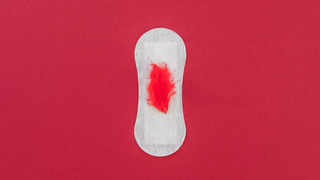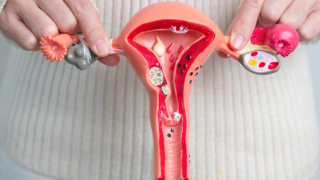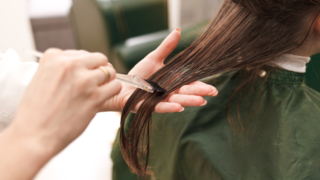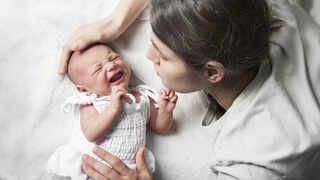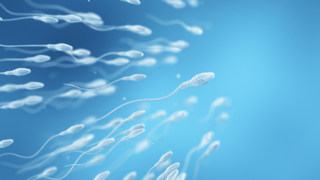In this article:
You've been impatiently expecting the birth of the baby, but let's be honest, you have also been yearning to get back to your usual routine. Pregnancy restrictions practically all disappear after delivery since they are almost exclusively linked to the risk of premature birth. Furthermore, by the time your six-week postpartum appointment arrives, you should be able to perform the majority of the activities you were warned not to do immediately after giving birth.
When can you hold a baby?
Doctors typically strive to promote skin-to-skin contact immediately after a vaginal delivery or C-section. They usually recommend placing the baby on the mother’s chest as soon as it is safe to do so, even in the operating room. Following a C-section, you will usually be transferred from the operating room to a recovery room, where you may hold your baby more comfortably.Your doctor’s team can perform all the required procedures on your newborn while the baby is with you, such as checking vital signs, administering vitamin K injections, and applying eye ointment. Immediate skin-to-skin contact helps to promote bonding and breastfeeding, and can even help your baby transition to life outside the womb.
When can you go home?
The length of your stay after delivery is determined by the hospital and your specific birth experience, including the presence of problems. However, physicians often aim for mom and baby to return home one to two days following a vaginal delivery and three to four days after a C-section.While some mothers want to leave the hospital as soon as possible, others want to remain longer, as long as their insurance allows it. The length of the stay is entirely based on your individual circumstances.
When can you have champagne for a celebration?
The good news is that you can have one a few hours after giving birth if you truly want to. Of course, for nursing mothers, the timing of the drink is important. To be safe, the ideal time to indulge is immediately after feeding the infant. To prevent transmitting alcohol to your child via breast milk, you should wait two to three hours before nursing after a single drink.When can you take a bath?
After all that time in the hospital, you may question, "When can I take a bath after giving birth?" Doctors often advise not bathing, swimming, or using hot tubs for at least six weeks, or until you see a doctor for a follow-up appointment. Early on, you'll most likely be advised to take a sitz bath, which is a small bath meant to aid in perineal healing.Following a C-section, physicians often apply small adhesive bandages, to your incision before applying another dressing on top. The outer dressing is typically removed one to two days after birth, and if the incision looks good your doctor will let you know if you can shower. Wait at least two weeks after giving birth before using baths or hot tubs. Some providers suggest waiting longer.
When can you drink coffee?
You could have coffee within a few hours after giving birth. If you drink coffee while nursing, the amount of caffeine that gets into breast milk is small. If you're concerned, schedule your coffee break so it comes just after you breastfeed rather than before.When can you exercise?
Within one to six weeks. Mothers who have vaginal deliveries can generally return to exercise sooner than those who have had C-sections, but both can engage in light exercises, such as walking, whenever they feel ready. We're not talking about intense exercise or high-impact aerobics. However, walking and Kegel exercises are excellent methods to ease back into shape. Furthermore, mild physical activity may have several significant benefits like improving sleep, reducing the risk of blood clots, and improving physical health and overall well-being. As long as everything is healing properly, your doctor will most likely clear you for all sorts of exercise during your six-week postpartum visit.When can you swim?
Many sources indicate you should wait until your postpartum bleeding has stopped before going swimming. This often occurs approximately six weeks after delivery.When can you drive a car?
You may usually get behind the wheel within one to six weeks. Women using narcotic pain relievers should not drive, but other than that, it all depends on how your specific recovery is doing. Doctors recommend starting with this, especially if you've had a C-section. Sit in the vehicle and practice shifting your foot from the accelerator to the brake while looking over your shoulder multiple times. The goal is to be able to do this without any discomfort. Some women may resume driving a few days after surgery, while others might require a few weeks before they feel ready. Those who experienced a vaginal birth with a large tear or had an episiotomy may need to refrain from driving for a certain period.When can you take birth control?
If you don't want to conceive, you should start using birth control when you're ready to resume sexual activity. Many individuals are "cleared" to have sex after six weeks, however, bear in mind that ovulation may occur as early as three weeks postpartum.FAQs on Postpartum Timeline: Here’s How Soon After Birth You Can Do Things?
- When may I resume domestic chores after giving birth?
After three weeks, you may begin performing additional housework. However, do not overdo it. Instead, rely on your support network as much as possible. Listen to your body, and take breaks as needed! - What activities should be avoided after giving birth?
Avoid sit-ups, crunches, and stomach curls. These might put pressure on your scar. For the first six weeks following delivery, do not lift anything heavier than your infant. If you need to lift anything around the house, tighten your belly and maintain a straight back.





